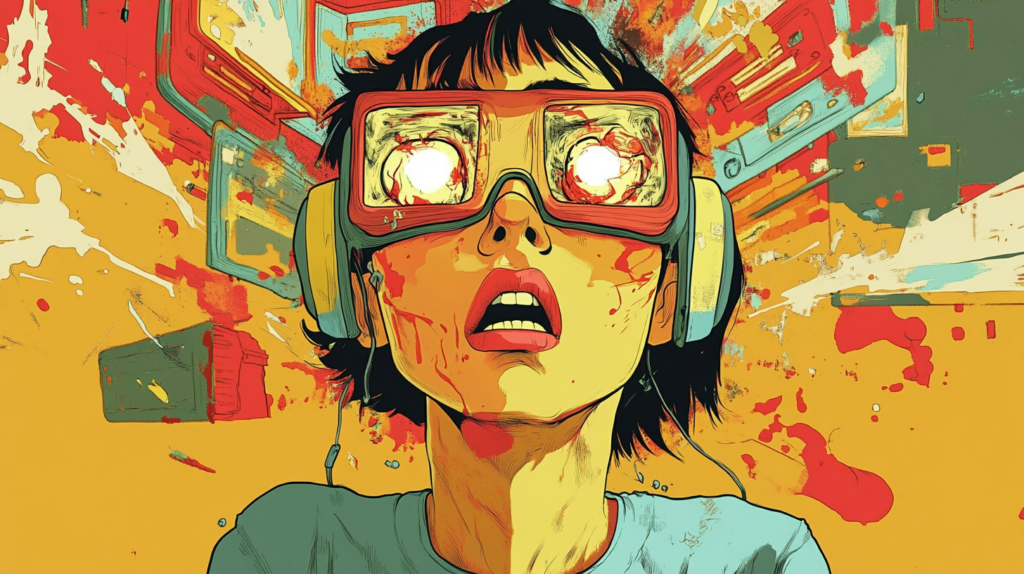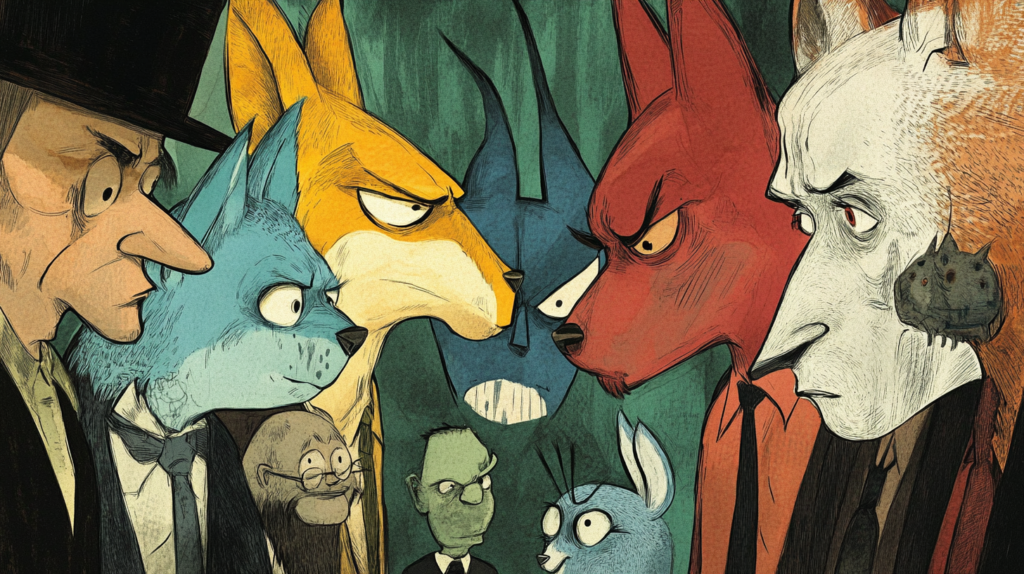Cartoons have long served as both a mirror and a mold for society—reflecting cultural values and, at times, challenging the status quo. As animated storytelling has evolved, so too has the conversation surrounding what content is deemed acceptable. Cartoon censorship sits at the complex crossroads of artistic freedom and cultural sensitivity. This article delves deep into the historical context, the underlying motivations, the controversies, and the ongoing debate over how to balance creativity with societal responsibility in animated media.
Historical Overview of Cartoon Censorship
Early Beginnings
The roots of cartoon censorship stretch back to the early days of animation. In the 1930s and 1940s, studios like Disney and Warner Bros. were pioneers in bringing animated stories to the public. However, these early cartoons were not immune to external pressures. During times of war and social unrest, governments often exerted pressure to align content with patriotic or moral ideals. For example, wartime propaganda was a significant factor in shaping early animated narratives, and certain racial stereotypes were either promoted or later censored as social attitudes evolved.
The Impact of the Cold War
The Cold War era introduced another layer of complexity. Amid rising ideological tensions, cartoons became an arena for subtle political commentary. Animators had to contend with censorship imposed by both governmental authorities and cultural watchdogs. Content that was seen as too subversive or that challenged established narratives was either altered or suppressed. In this period, censorship was not solely about moral propriety but was also a tool for political control, ensuring that media did not undermine the prevailing social order.
Transition to the Modern Era
In the latter half of the 20th century, as animated media expanded into television and later into digital platforms, the scope of censorship broadened. The increasing accessibility of cartoons meant that they were now part of the daily lives of people from varied cultural backgrounds. This shift brought with it a growing need to reconcile the creative impulses of animators with the demands of a global, diverse audience.
The Role of Cultural Sensitivity
Defining Cultural Sensitivity in Animation
Cultural sensitivity in cartoons is about more than just avoiding offensive stereotypes. It involves a deep understanding of the historical and social contexts in which animated content is created and consumed. A cartoon that might be seen as a light-hearted romp in one culture could easily be interpreted as disrespectful or even harmful in another.
Creators must navigate a landscape where symbols, language, and humor carry different meanings across cultural divides. For example, character designs that seem endearing in one country may evoke outdated or negative stereotypes in another. As cartoons increasingly cross borders via streaming platforms and social media, the stakes have grown higher for content creators. A failure to recognize and respect cultural nuances can result in backlash, calls for censorship, or even bans in certain markets.
Globalization and the Need for Localization
With the global distribution of cartoons, localization has become a critical component of content creation. Localization goes beyond mere translation—it involves adapting visual and narrative elements to fit local cultural norms. This might include modifying jokes that rely on cultural references, altering character appearances to avoid ethnic caricatures, or even re-editing scenes that contain imagery deemed sensitive by local standards.
The process of localization is inherently challenging. While it helps ensure that content is culturally appropriate, it can also dilute the original artistic vision. Striking the right balance requires careful collaboration between creators, cultural consultants, and local distributors, ensuring that the final product remains true to its artistic roots while being respectful to diverse audiences.

Freedom of Expression Versus Censorship
The Case for Creative Freedom
At its core, the debate over cartoon censorship is one of free expression versus social responsibility. Many animators and artists argue that creativity should not be hindered by the threat of censorship. For them, cartoons are a medium for exploring controversial subjects, critiquing social norms, and pushing boundaries. When artists are free to express their visions unimpeded, they can produce work that challenges audiences and sparks meaningful conversations.
Supporters of creative freedom contend that cartoons, like all forms of art, thrive on the ability to take risks. Banning or altering content because it might offend a segment of the population can lead to a homogenized media landscape where innovation is stifled. In democratic societies, the freedom to create—even when that creation is provocative—is seen as essential to cultural progress.
The Rationale for Censorship
On the other side of the debate are those who see censorship as a necessary safeguard. Particularly when it comes to content aimed at children or vulnerable populations, there is a strong argument for limiting exposure to material that could be seen as violent, discriminatory, or otherwise harmful. Advocates for censorship assert that cartoons wield significant influence, especially among young audiences whose perceptions of social norms are still forming.
Censorship, in this view, is not about stifling creativity but about protecting audiences from potentially damaging content. It is seen as a way to ensure that media contributes positively to societal values rather than undermining them. The challenge, however, lies in determining what constitutes harmful content and who gets to make that decision. Too much regulation can lead to overreach, while too little may allow harmful stereotypes or messages to proliferate.
Case Studies of Cartoon Censorship
South Park: Pushing the Boundaries
Few cartoons illustrate the tension between creative freedom and censorship better than South Park. Known for its biting satire and willingness to tackle controversial issues head-on, South Park has often found itself at the center of censorship debates. The show’s creators, Trey Parker and Matt Stone, have not shied away from topics such as religion, politics, and social taboos, often using humor to underscore their points.
For instance, episodes that lampoon religious figures or political ideologies have sparked outrage in various parts of the world. In some cases, the backlash has led to episodes being edited or withheld entirely in certain markets. These controversies underscore the challenges of maintaining a balance—South Park’s strength lies in its fearless commentary, but that very strength also makes it a lightning rod for censorship battles.
While The Simpsons may appear more family-friendly, it too has faced censorship issues over the decades. Episodes that address sensitive topics—such as immigration, racial stereotypes, or critiques of religious institutions—have sometimes been subject to scrutiny. Critics have argued that even satirical portrayals can inadvertently reinforce harmful stereotypes or trivialize serious issues.
The long-running series has had to adapt to shifting cultural norms, sometimes revising or retiring content that once seemed acceptable. This evolution reflects a broader trend in the entertainment industry: the realization that even well-intentioned satire must be constantly reevaluated in light of contemporary understandings of cultural sensitivity.
Anime and Regional Censorship
Anime presents a unique case study in cartoon censorship due to its global appeal and strong cultural roots. Many anime series contain elements that are deeply embedded in Japanese culture and history. When these shows are exported to international markets, they often undergo changes to meet local standards of decency or cultural appropriateness.
For example, certain scenes that feature violence or suggestive content might be toned down or altered entirely. In some cases, the changes go beyond mere editing; entire story arcs may be reinterpreted to better fit the cultural expectations of the target audience. This phenomenon not only raises questions about artistic integrity but also highlights the complexities of balancing creative vision with the need for cultural sensitivity.

The Impact of Censorship on Creativity
Self-Censorship: A Double-Edged Sword
One of the most significant concerns among content creators is the phenomenon of self-censorship. The fear of backlash or legal repercussions can lead artists to preemptively alter their work. This is particularly prevalent in environments where censorship authorities are known to enforce strict guidelines. As a result, creators may avoid exploring contentious themes or may dilute their messages to ensure broader acceptability.
Self-censorship can have a profound impact on the vibrancy of animated media. When creators shy away from taking creative risks, the medium loses much of its innovative spark. This cautious approach may lead to a homogenization of content, where only non-controversial, formulaic stories are told. Over time, this can stifle the diversity of voices and narratives that are essential to a dynamic and reflective cultural landscape.
The Chilling Effect on Social Commentary
Cartoons have historically been a powerful medium for social commentary. From the satirical wit of The Simpsons to the bold provocations of South Park, animated series have often served as vehicles for critiquing societal norms and questioning authority. However, when censorship limits the scope of permissible content, the medium’s ability to serve as a platform for social critique is diminished.
A chilling effect on social commentary not only restricts the range of topics that can be addressed but also undermines the role of cartoons as a space for dialogue and dissent. In a society where animated media is increasingly influential, the suppression of critical voices can have broader implications for public discourse and cultural evolution.
Legal Frameworks and International Perspectives
The United States: Freedom and Regulation
In the United States, the First Amendment provides strong protection for freedom of expression, which extends to all forms of artistic expression, including cartoons. However, this freedom is not absolute. Content that is deemed to incite violence, spread hate speech, or be overtly obscene can still be subject to legal challenges and regulatory action.
Moreover, self-regulatory bodies within the entertainment industry impose guidelines—often voluntarily—to ensure that content is appropriate for different age groups. While these measures are primarily designed to protect young viewers, they also influence the creative decisions made by animators and writers. The delicate balance between upholding the right to free expression and protecting public sensibilities remains a point of contention in American media law.
Europe: Striking a Balance
European countries typically adopt a more centralized approach to media regulation. Institutions such as the European Broadcasting Union set standards that aim to protect cultural diversity while also safeguarding freedom of expression. In some European nations, cartoons that cross certain lines—whether through explicit content or potentially inflammatory themes—may be subject to edits, warning labels, or, in extreme cases, bans.
The European model often involves close consultation with cultural and social experts, ensuring that censorship decisions are informed by a broad range of perspectives. However, even in Europe, debates persist over where to draw the line between acceptable satire and harmful content.
In many Asian and Middle Eastern countries, cartoon censorship is heavily influenced by traditional values and religious norms. For instance, in regions with strict interpretations of religious law, animated content that features blasphemous imagery or challenges conservative social norms can face severe restrictions. Japan, known for its robust anime industry, still grapples with the challenge of localizing content for export while preserving cultural authenticity. The tension between traditional values and modern creative expression is particularly pronounced in these regions, highlighting the varied approaches to censorship worldwide.
Social Media and Public Opinion
The Power of the Digital Age
Social media has transformed how cartoon censorship is discussed and enforced. Platforms like Easybie, Cartoonist Network, Twitter, Facebook, and YouTube have given audiences an unprecedented voice in calling out content they find offensive. Viral campaigns and online petitions can lead to rapid public backlash, sometimes resulting in the alteration or removal of controversial scenes or entire episodes. This democratization of opinion has, in some cases, led to what is often referred to as cancel culture, where creators are pressured to conform to prevailing social norms under threat of public shaming.
While social media can hold creators accountable for insensitive content, it can also contribute to a climate of fear where the potential for online outrage encourages preemptive self-censorship. The impact of digital public opinion on cartoon content is profound, often pushing studios to weigh the risk of backlash against the desire to tell bold, innovative stories.
Grassroots Advocacy for Inclusive Storytelling
On the other side of the spectrum, social media has also empowered communities to advocate for more inclusive and representative content. Marginalized groups have used digital platforms to highlight problematic representations and demand change. This grassroots advocacy can lead to constructive dialogue between creators and audiences, ultimately fostering a more thoughtful approach to cultural sensitivity in animated media.

Strategies for Balancing Creativity and Sensitivity
Collaborative Development and Consultation
One of the most effective strategies for balancing creative freedom with sensitivity is fostering collaboration. This can involve bringing in cultural consultants, historians, and social critics during the development process. By engaging a diverse group of experts, content creators can identify potentially problematic elements before a cartoon reaches a wide audience. Such consultations not only help to avoid unintended offenses but also enrich the narrative, offering fresh perspectives that can lead to more layered storytelling.
Transparent Guidelines and Adaptive Practices
Establishing clear, transparent guidelines for what constitutes acceptable content is another key strategy. These guidelines should be developed in consultation with industry stakeholders, cultural experts, and community representatives. Transparency in the decision-making process can help build trust between creators and audiences, ensuring that censorship is applied thoughtfully rather than arbitrarily.nnFurthermore, adaptive practices—such as creating multiple versions of an episode for different markets—can allow for a tailored approach. In this model, the core creative vision is maintained while modifications are made to ensure cultural appropriateness in regions where certain content might be received differently.
Embracing the Spirit of Inclusive Storytelling
Perhaps the most promising strategy is to embrace the very idea of inclusive storytelling. By ensuring that cartoons feature a broad range of voices, experiences, and perspectives, creators can preempt many of the controversies that lead to censorship debates. When audiences see themselves reflected in the stories being told, there is less risk of alienation or offense. Inclusive storytelling not only enriches the narrative but also fosters a sense of belonging and respect among diverse viewer communities.
The Future of Cartoon Censorship
Technological Advancements and New Frontiers
The evolution of digital media continues to redefine the landscape of cartoon censorship. Advances in animation technology, the rise of streaming platforms, and the global reach of social media are all factors that will shape how censorship is approached in the future. As technology enables more interactive and immersive storytelling—such as through virtual reality or augmented reality—new questions about content regulation will emerge. How should regulators adapt to interactive narratives? What responsibilities do creators have in moderating user-generated content in these new media spaces? These questions are likely to drive the next phase of debates surrounding cartoon censorship.
Changing Social Norms and Evolving Standards
Social norms are not static, and neither are the standards for what is considered acceptable in animated media. As cultural awareness increases and marginalized voices gain prominence, the expectations placed on content creators will continue to evolve. This evolution may lead to a gradual shift in the boundaries of censorship, with greater emphasis on inclusivity and respectful representation. However, this dynamic environment also means that creators must remain agile, continuously reassessing their work in the light of new cultural insights and sensitivities.

Legal and Ethical Implications Revisited
The tension between legal frameworks and ethical responsibilities remains at the heart of the censorship debate. On the legal front, creators must navigate a patchwork of regional regulations that vary in strictness and focus. Ethically, the challenge is to produce work that is both innovative and socially responsible—a task that requires a deep understanding of the potential impact of one’s creative choices. As debates over cartoon censorship continue, the legal and ethical dimensions will likely become even more intertwined, forcing stakeholders to engage in ongoing dialogue about the rights and responsibilities inherent in animated storytelling.
Cartoon Censorship
Cartoon censorship is a multifaceted issue that encapsulates the broader challenges of balancing artistic freedom with cultural sensitivity. From the early days of animation to the current era of digital streaming, cartoons have been both a reflection of and a catalyst for societal change. The history of censorship in animated media reveals a long-standing tension between the desire to push creative boundaries and the imperative to protect audiences from content deemed harmful or insensitive.
As we look toward the future, the debate over cartoon censorship is poised to become even more complex. Globalization, technological advancements, and evolving cultural norms will all play critical roles in shaping how censorship is applied and understood. Yet, amid these challenges, there is hope. Through collaborative development, transparent guidelines, and a steadfast commitment to inclusive storytelling, content creators and regulators can work together to strike a balance that honors both creativity and sensitivity.
The journey toward this balance is ongoing and will require the continued engagement of artists, audiences, lawmakers, and cultural experts. Ultimately, the goal is not to restrict creative expression but to ensure that animated media remains a force for positive cultural dialogue—a medium that challenges, inspires, and unites people from all walks of life.
In an era marked by rapid change and global interconnectedness, the future of cartoon censorship will depend on our collective ability to foster an environment where creative freedom and social responsibility are not mutually exclusive. By embracing the complexities of cultural sensitivity and recognizing the transformative power of art, we can ensure that cartoons continue to serve as a vibrant and vital form of storytelling for generations to come.
This post was created with our nice and easy submission form. Create your post!



